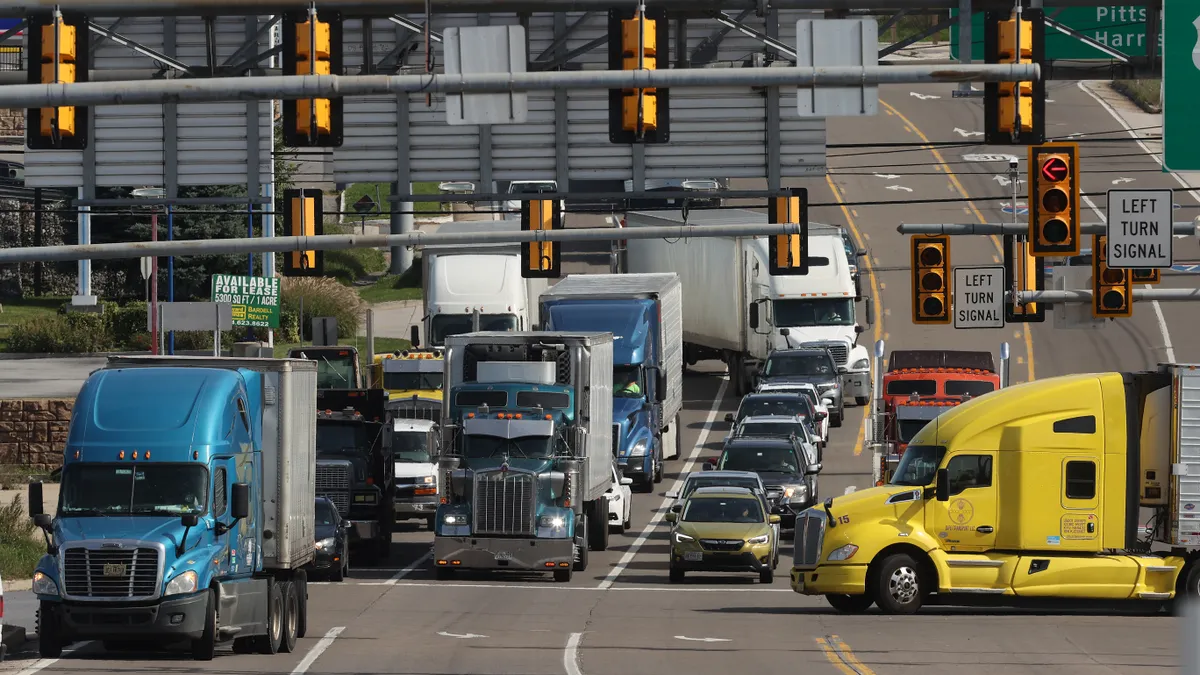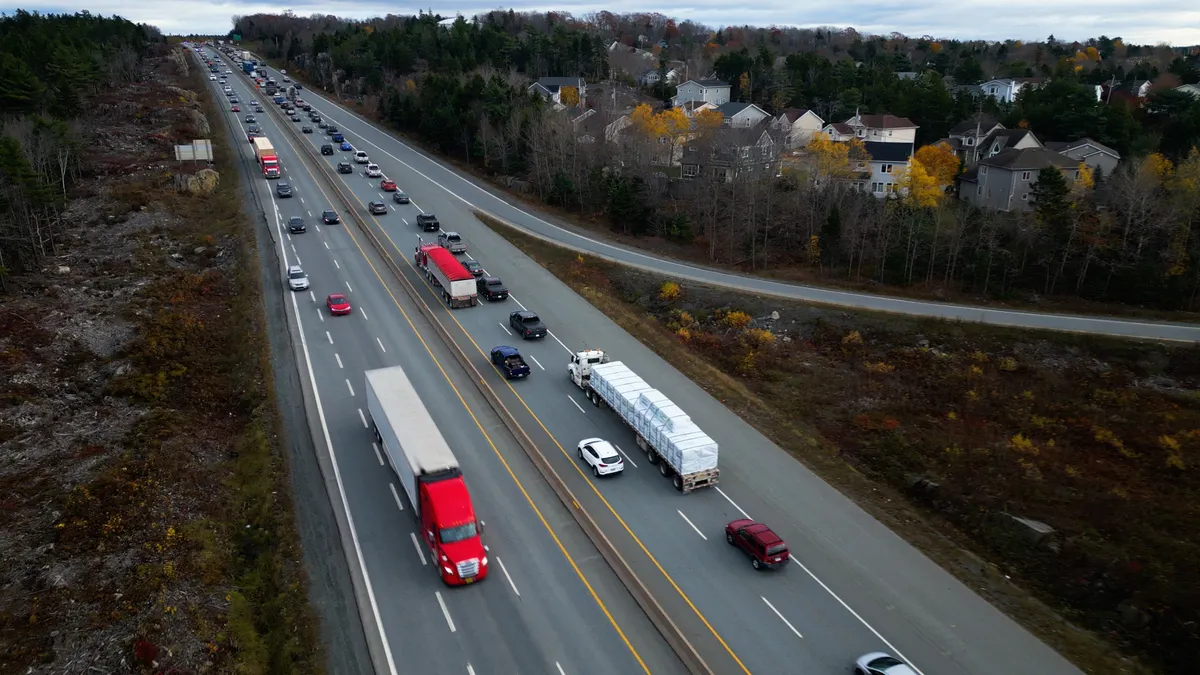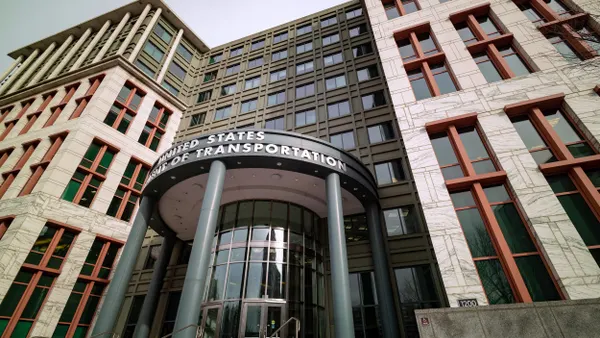Dive Brief:
- The National Highway Traffic Safety Administration is slated to require trailers to have stronger rear impact guards to add protection for passenger vehicles, according to a final rule released last Thursday.
- The guards should be able to withstand a rear underride crash of 35 mph, matching standards used in Canada. A rear underride crash occurs when a passenger vehicle crashes into the back of a large truck trailer and slides underneath.
- Once published, new trailers and semitrailers with a gross vehicle weight of 10,000 pounds or more will have a two-year period to comply. The NHTSA estimates that 94% of trailers and semitrailers already meet those standards.
Dive Insight:
The Bipartisan Infrastructure Law from 2021 mandated upgrades to rear impact guards, which have been considered since 2015 through a proposed rule notice. The more protective rear impact guards will raise the guards’ ability to withstand impact, currently designed for speeds of up to 30 mph, to 35 mph.
The NHTSA suggested that the newer equipment will cost $254.35 per guard, and it said a 48.9-pound addition on average for the devices would reduce overall fuel efficiency.
Some safety advocates called for raising the impact threshold and said the proposed requirements would make little difference in preventing crashes. The Underride Network, an advocacy group, stated that NHTSA’s proposal would only “upgrade the standard as basically existed in 1996,” without going further to include technological improvements made for rear impact guards.
The NHTSA also said it’s addressing other provisions in the Bipartisan Infrastructure Law, which requires the agency to report research on side underride guards, improve data collection of underride crashes, establish a federal advisory committee on underride protection and more.
Once the rule is published in the Federal Register, there will be a 45-day period of reconsideration for petitions.










